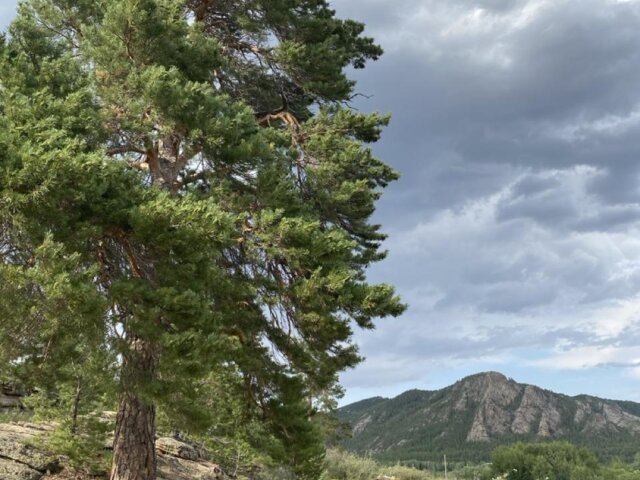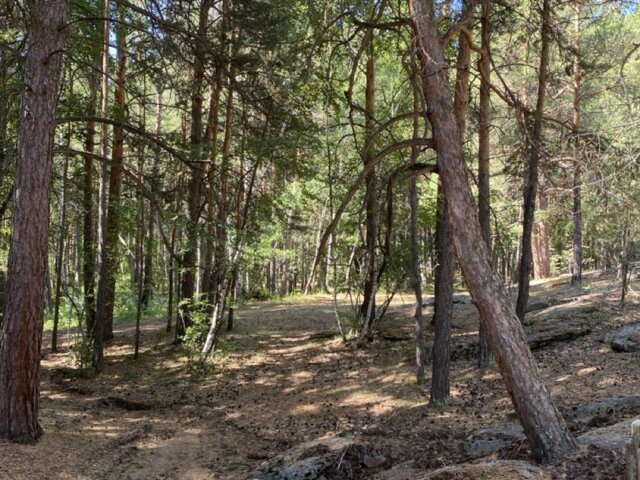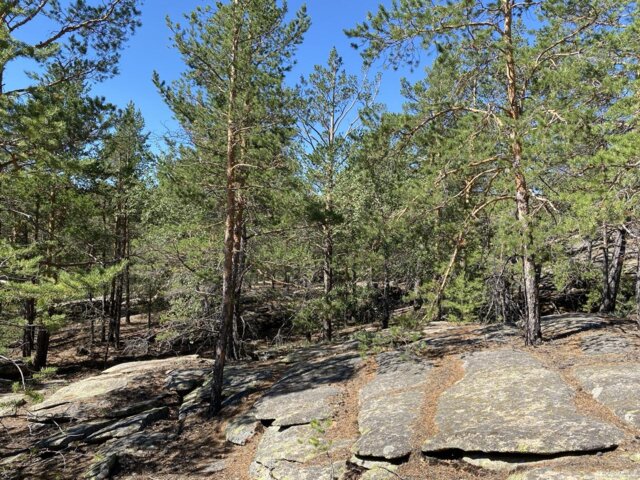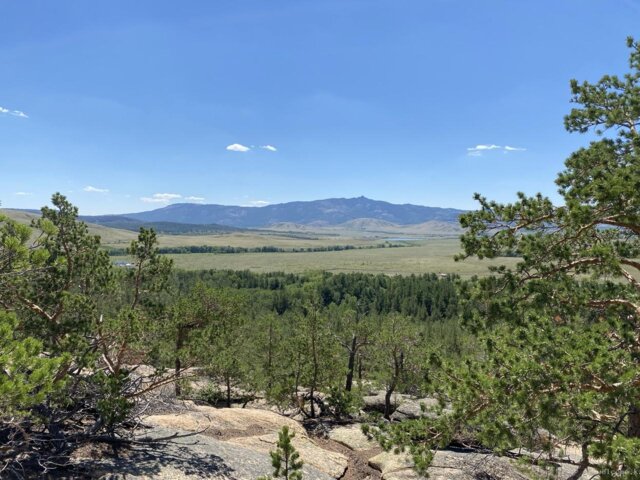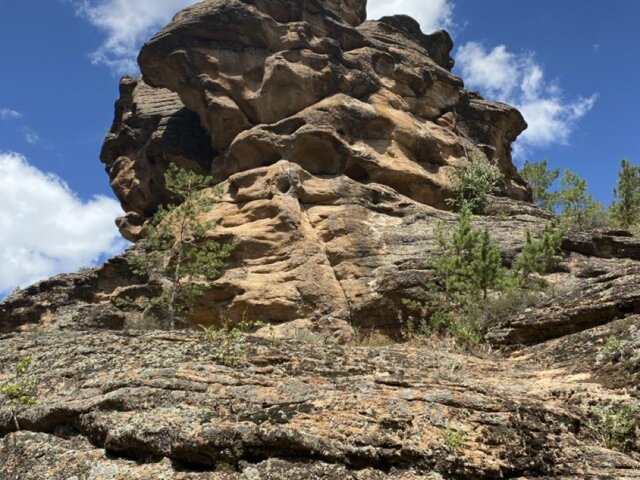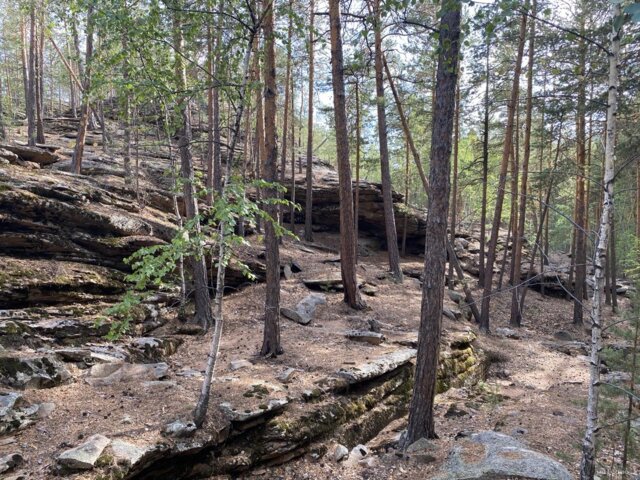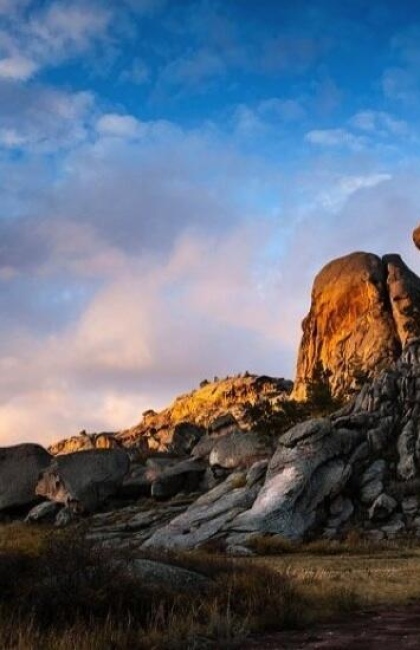Karkaraly National Park
Pine-covered granite cliffs, clear lakes, ancient stories, and the scent of conifers – that’s Karkaraly National Park, one of the most scenic places in Central Kazakhstan.
From Seabed to Peaks
Karkaraly is located about 220 km (137 mi) east of the city of Karaganda. The signature landscape is the layered granite formations topped with pine trees. Hundreds of millions of years ago, this area was covered by sea. Sand, silt, clay, and other sediments settled at the bottom and compressed into sandstone, shale, limestone, and mudstone – the very layers you see today. Around 300-400 million years ago, the sea receded, and the rocks rose, forming the Karkaraly Mountains, part of the ancient Kazakh Uplands.
The scenery resembles Borovoe, but Karkaraly is quieter and more untamed. There’s less infrastructure, lower prices, and far fewer people – exactly what draws visitors here.
Key Sights and Attractions
Lake Shaitankol (Devil’s Lake)
One of the most mysterious places in the park and in all of Kazakhstan. This small mountain lake is wrapped in legends. Locals say you shouldn’t swim here. Supposedly, the lake has a double bottom, and no one knows how deep it really is. Its reddish tint once fueled superstitions, though the color comes from minerals in the water.
A legend says the devil confuses travelers on their way here. Perhaps that was true in the past, but today it’s hard to get lost: arrows painted on stones mark the path. The trail to Shaitankol starts near the Shakhtyor Health Resort and takes about four hours. You can also approach it from the opposite side, from Lake Bassein.
Lake Bassein
The name translates as “Swimming Pool,” and it’s easy to see why. This natural lake is almost perfectly rectangular, its shoreline enclosed by granite walls roughly five meters high. The effect is so precise that it really does look like a man-made pool. The hike to Bassein takes about four hours and is one of the most popular routes in the park.
Lake Pashennoye (Pashino)
A scenic lake located close to the Shakhtyor Health Resort. On the side facing the resort, the shore slopes gently into the water and has a fine pebble beach suitable for swimming. The opposite side is covered in sedge and looks more marshy. The lake’s main curiosity is its floating islands made of silt and aquatic plants. There are fish here, but fishing without a permit is not allowed. 
Three Caves
In the Maliksay tract lies one of the park’s most ancient sites. Hidden in the rocks are the Three Caves, where archaeologists discovered traces of prehistoric settlements. Even in summer, the air inside stays cool, and the cave walls sparkle with quartz and mineral deposits.
Just 600 meters away is the Bolshaya Palata (Big Chamber), a natural granite fissure around 10 meters deep. From there, you get excellent views of the surrounding mountains.
Nature Museum and Animal Enclosure
In the Tasbulak tract stands the Nature Museum, a two-story wooden building with taxidermied birds and animals, mineral collections, and archival photos of the Karkaraly Mountains. Nearby is a spacious enclosure where you can see deer, sika deer, ponies, yaks, and even bison. There’s also a small petting zoo with hedgehogs, turtles, rabbits, pheasants, and guinea fowl.
Komsomol Peak (Zhirensakal, Kabany Shish)
The highest point of the Karkaraly range rises to 1,403 meters (4603 ft). It’s one of the park’s most popular hiking routes. The ascent is relatively easy, especially with a guide, and the full route is under 10 km (6 mi). The trail passes through forest, stone clearings, and open viewpoints, and from the summit you get a sweeping panorama that stretches for dozens of kilometers.
Kyzyl-Kent Palace
Kyzyl-Kent (also known as Kyzylkenish) is a mysterious 17th-century ruin on the slopes of the Kent Mountains, just three kilometers from the village of the same name. Despite the word “palace,” the structure was most likely not a noble residence but a Buddhist temple or monastery. That’s exactly what makes it so remarkable. A Buddhist sanctuary in Central Kazakhstan sounds almost like an alternate history. The site challenges the familiar image of the Kazakh steppe and invites a new look at the region’s cultural connections.
The Forester’s House in Komissarovka
On the shore of Lake Kim-Asar (Komissarovskoye) stands the Forester’s House, built in the 1910s. This isn’t just an old dwelling, it’s a wooden architectural artifact from the early 20th century. The façades are adorned with hand-carved details, and the roof is topped with spires and sharp finials. Its first owner, forester L. S. Sadovnichy, both lived here and introduced Siberian tree species to the area.
Nature and Recreation Karkaraly is made for hiking. There are more than a dozen marked trails – to Lake Shaitankol, Lake Bassein, the Three Caves, and other sites. Along the way, you’ll come across scenic clearings, springs, and viewpoints. In summer, locals and visitors gather berries and mushrooms: strawberries, raspberries, lingonberries. The air smells of pine, and even a short walk feels like a reboot.
Flora and Fauna
Karkaraly is more than cliffs and lakes, its biodiversity is impressive. Pine, birch, aspen, willow, juniper, rosehip, and honeysuckle are common. Among the rare species are Karkaraly barberry, sphagnum fimbriatum, Kyrgyz birch,, and adonis vernalis. Northwest of Karkaraly lies a sphagnum bog – the southernmost habitat of this moss in the country. The wildlife is equally rich. Marmots, ground squirrels, jerboas, hamsters, voles, and muskrats inhabit the slopes and steppes. Wolves, foxes, badgers, weasels, lynxes, wild boars, elk, and red deer roam the forests. Bears lived here until the 1940s, and traces of them remain in local folklore.
Where to Stay?
In and around Karkaraly, you’ll find resorts, tourist bases, guesthouses, and glamping sites. Locals also rent out rooms in town. For those who prefer wilderness, camping is allowed in designated areas.
How to Get There?
From Karaganda
The distance is about 230 km (143 mi). By car, the trip takes 4-5 hours. In 2024, the road was repaired, so the drive is comfortable. Regular buses and minibuses run from Karaganda to the town of Karkaraly. From there, the park entrance is only a few kilometers away, you can take a taxi or walk.
From Astana
Karkaraly is roughly 370 km (230 mi) from Astana, or 5-7 hours by car. The most convenient route goes through Temirtau and Karaganda. If you’re traveling by public transport, take a train or bus to Karaganda and transfer to a local bus bound for Karkaraly.
Other tourist attractions near Karkaraly National Park:
- Kyzylarai Mountains
- Begazy Necropolis
- Bugyly Mountains
- Bektau Ata Tract
- Bayanaul National Park

